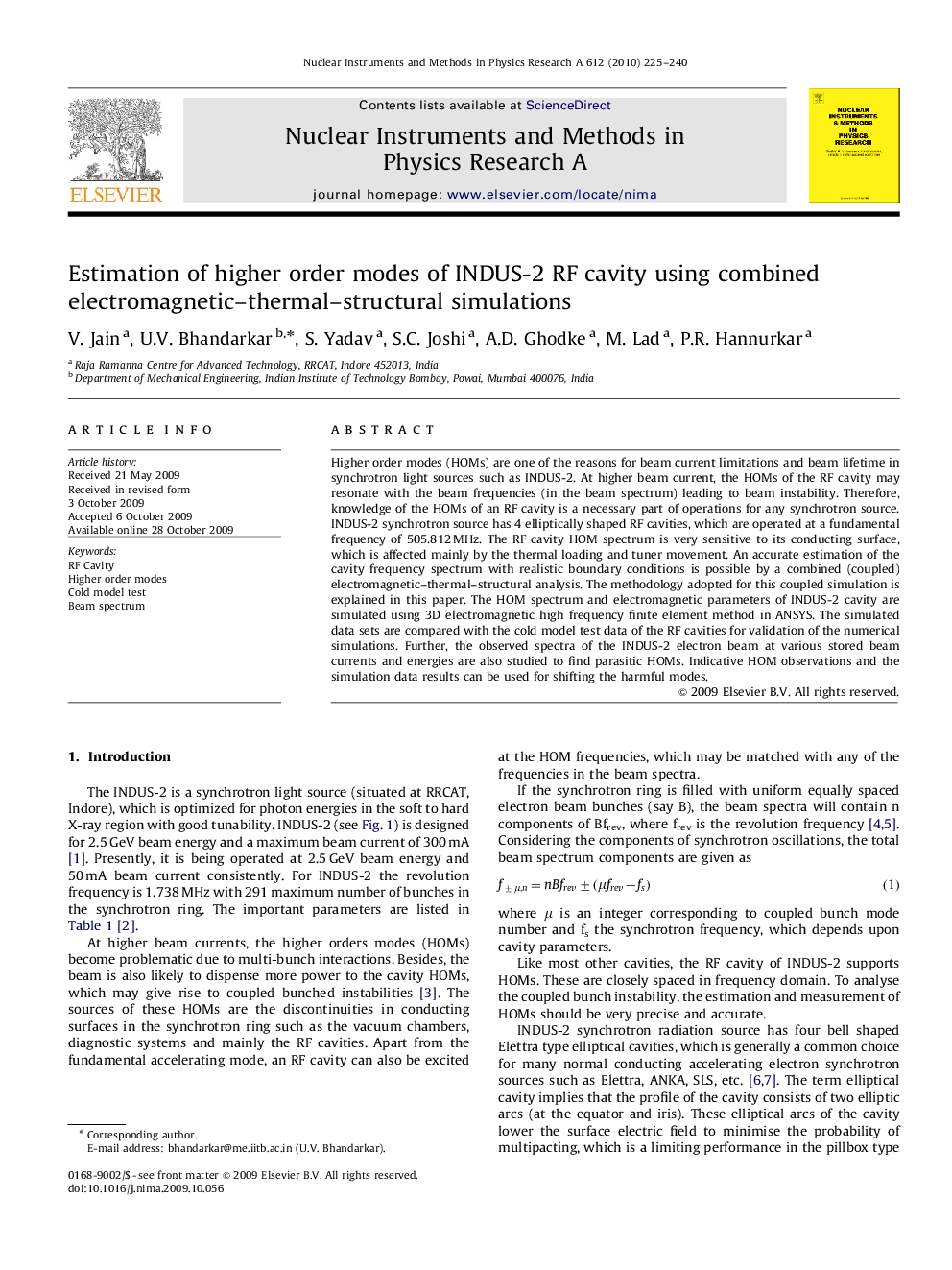| Article ID | Journal | Published Year | Pages | File Type |
|---|---|---|---|---|
| 1827312 | Nuclear Instruments and Methods in Physics Research Section A: Accelerators, Spectrometers, Detectors and Associated Equipment | 2010 | 16 Pages |
Abstract
Higher order modes (HOMs) are one of the reasons for beam current limitations and beam lifetime in synchrotron light sources such as INDUS-2. At higher beam current, the HOMs of the RF cavity may resonate with the beam frequencies (in the beam spectrum) leading to beam instability. Therefore, knowledge of the HOMs of an RF cavity is a necessary part of operations for any synchrotron source. INDUS-2 synchrotron source has 4 elliptically shaped RF cavities, which are operated at a fundamental frequency of 505.812Â MHz. The RF cavity HOM spectrum is very sensitive to its conducting surface, which is affected mainly by the thermal loading and tuner movement. An accurate estimation of the cavity frequency spectrum with realistic boundary conditions is possible by a combined (coupled) electromagnetic-thermal-structural analysis. The methodology adopted for this coupled simulation is explained in this paper. The HOM spectrum and electromagnetic parameters of INDUS-2 cavity are simulated using 3D electromagnetic high frequency finite element method in ANSYS. The simulated data sets are compared with the cold model test data of the RF cavities for validation of the numerical simulations. Further, the observed spectra of the INDUS-2 electron beam at various stored beam currents and energies are also studied to find parasitic HOMs. Indicative HOM observations and the simulation data results can be used for shifting the harmful modes.
Keywords
Related Topics
Physical Sciences and Engineering
Physics and Astronomy
Instrumentation
Authors
V. Jain, U.V. Bhandarkar, S. Yadav, S.C. Joshi, A.D. Ghodke, M. Lad, P.R. Hannurkar,
